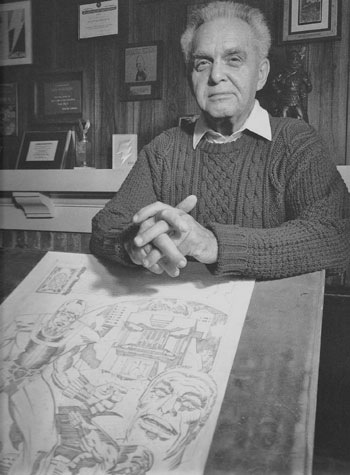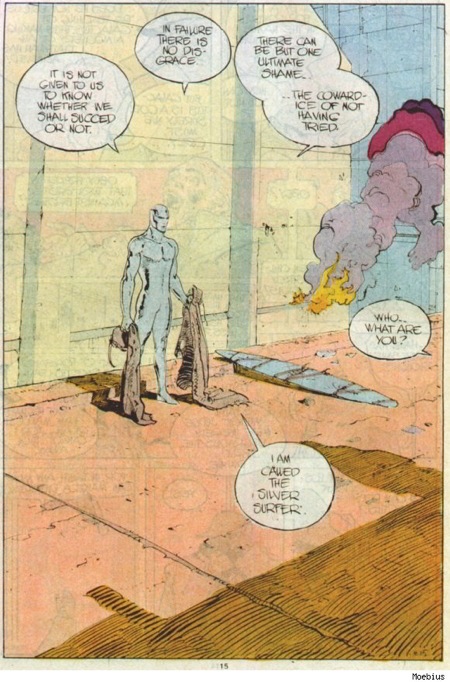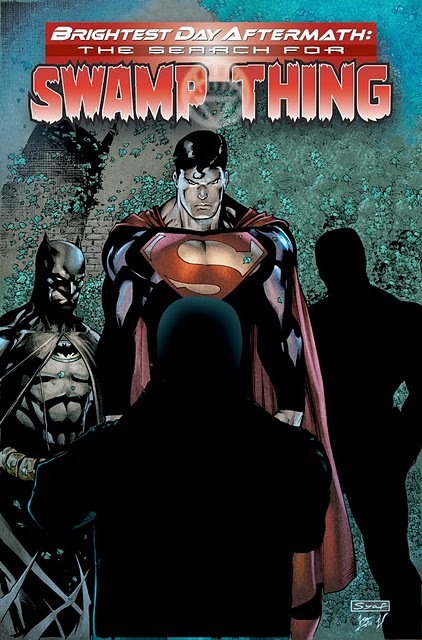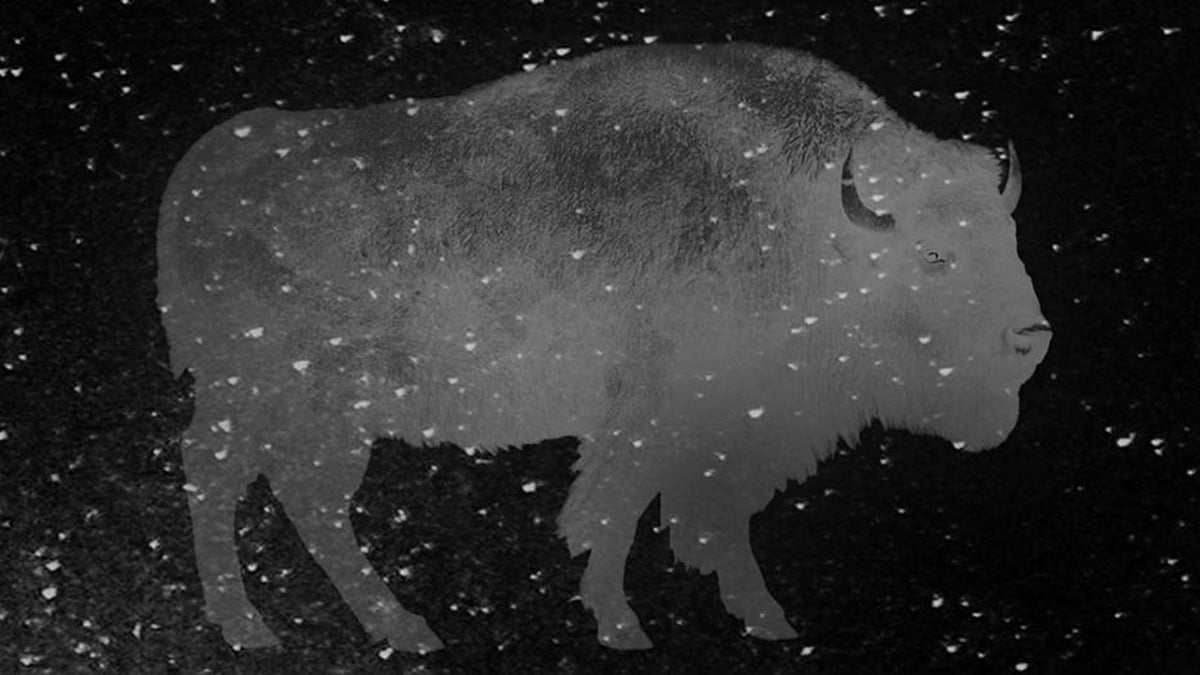Continuing our big catch up on weekend reading for the elite.
§ Gary Groth comes out swinging at Jim Shooter for the latter’s historical revisionism on display on his blog over the matter of Jack Kirby’s artwork.
I can’t say whether Shooter’s mind was blown at this or any other time, but I can say with absolute certainty that nothing else in this scenario is true. That’s right; Kirby hadn’t sued Marvel. There was no lawsuit, no discovery, no documents produced, no legal maneuvering within a lawsuit, no demand by Kirby, enshrined in a lawyer’s letter or otherwise, that he receive sole credit for characters he co-created, and no demand that Lee receive none. It’s all a fiction. None of this happened.
A very young Beat was at at least one of the panels in question — the one with Alan Moore! — and vividly remembers the Jim Shooter incident. Unmentioned by either (as we recall it in our absinthe hazed mind) is Roz Kirby standing up and saying “Mr. Shooter that is just not true!” Truly one of the greatest convention moments of all time — both Kirbys, Shooter, Miller, Moore and Groth all locked in eternal battle.
Former Bullpener Ron Fontes chimes up in the lively comments section with a hitherto unknown reason for some of Marvel’s 80s art mysteries:
First, I want you to know that I bear no love for Marvel. I view my employment there as Time in Hell with some very good things mixed in that almost compensate for the torture. I hate to tell you this, but I worked in Special Projects at Marvel from 1982-1985, under Sol Brodsky and Johnny Romita (the Nicest Man in Comics). Here’s what REALLY kept Marvel from returning artwork: Old pages were stored in a Brooklyn warehouse which was FLOODED around 1983. Decades of artwork was actually destroyed and could not be returned to anyone at all as it was just so much soggy paper residue. That is why the Marvel Masterworks series was repro’d from faded plate negatives and had to be touched up by the likes of Phil Lord et al. I’m really surprised in all this time no one has revealed this fact. I strongly remember the day of the flood because Sol and others were pale with shock. I also have to add, great as he was as an artist, Jack Kirby was a lousy businessman who cut bad deals. See TALES TO ASTONISH by Ronin Ro. Unfortunately, creative talent does not go hand-in-hand with good business acumen. In case you haven’t noticed, arrogance and egotism runs rife in the comics industry, just as it does in the film industry. Artists have been notorious for being self-aggrandizing pricks throughout history. If they were normal people with realistic self-images, they wouldn’t be artists at all. Shooter is just a man. He’s a prick, he’s a good guy, depends on circumstance and who you talk to. We’re all flawed fools. So back off the jackass’ corpse you’re beating. It was all long ago, and besides the King is dead.
As several have noted, although this seems like ancient history it is actually the very heart of the matter with long veins of greed and judgement winding down to the present.
§ Just to show that the world is a mixture of greys, the same Shooter blog has a lecture on storytelling that includes notes on panel layouts taken entirely from Wtachmen and Los Bros. Hernandez, just so you know it is, you know, PERFECT.
I always get in arguments with Barry Windsor-Smith over this. He says there are nine kinds of shots. I say there are three kinds of shots. You can say whatever you want, as long as you understand the principles, but let’s use my definition for the moment because it’s me here.
§ And David Brothers explains why artists love Moebius via the vessel of Silver Surfer: Parable, the book that they argued about in Crimson Tide. Interestingly, the piece also tacitly explains how unsatisfying our current pirate-based scanning technology is where paper-density is concerned.
So, in the end, you have a book that’s a perfect storm of comics legends. Stan & Jack helped revolutionize American comics. Moebius is a pioneer who has been at the top of his game. Kirby didn’t have any direct involvement in this project, but when you collaborate with Lee on a project starring two of their greatest creations, you don’t get to just ignore Kirby. He haunts the book, forcing you to compare his Surfer and visual storytelling to Moebius’s. This is a master coming to play in another master’s backyard, and at least a tip of the hat must be paid to the originator.
§ This quote from Roger Langridge about turning kids’ characters into gritty R-rated characters has been getting quite a bit of play. I’m with those who hold that there can be different levels for various ages, but it IS unusual to see major, licensable characters going from PG-12 to R as most Marvel and DC characters do. This is yet another spin-off of the “vast universe” of superhero comics — it would be easy to keep Spidey the PG-13 hero and the Punisher the R hero except that they are always meeting up for a ham sandwich.
As a whole, no. I really don’t think Marvel and DC are helping things by having gritty, R-rated versions of their superheroes in their main comics – what they sell as the “real” versions – while simultaneously selling those exact same characters in kids’ comics and plastering them all over lunchboxes and animated cartoons. Only a parent who actively follows the comics – which most don’t – has a hope in hell of knowing which Batman comic is okay for their kids and which ones they shouldn’t be allowed to touch with a ten-foot bargepole. Casual readership by kids, or by parents for their kids, is effectively impossible the way things are currently structured. And I think the waters are muddied too far now to claw that ground back. I think it’s insane that DC have spent 70 years making Superman as big as Mickey Mouse, and branding him to be understood by parents as being pretty much as kid-friendly as Mickey Mouse, only to piss that brand away in a decade. Nothing wrong with doing mature content in comics – in fact, it should be encouraged as often as possible – but doing it with characters who are on your kids’ lunchboxes is kind of moronic. Take a lesson from Watchmen and come up with new characters for that stuff. And then go back to Superman and Batman and put the same kind of love and effort and craft and intelligence you’ve been putting into all those rape scenes and body mutilations into something kids can read, and adults can also be proud to read because of all the love and effort and craft and intelligence you’ve put into it, and make those the “real” versions.
Meanwhile, back at the ranch, the ongoing reorganization at DC gets some airing. Rich Johnston seems to have been leaked some kind of promo piece for the West Coast DC office, with names, ranks and serial numbers. As reported, editors Mike Carlin, Sean Ryan, Adam Schlagman and Pornsak Pichetshotehave all moved to the West Coast to achieve great deeds of renown apparently.
Rich also puts together the obvious clues about Constantine showing up in the DCU in the Swamp thing storyline. With all this switching around going on, some are beginning to wonder what’s up at former Hellblazer home base, Vertigo, with iFanboy’s Josh Flanagan boldly declaring A World Without Vertigo Comics Is No World I Want
From the outset, the number of high quality, professionally produced, non-superhero titles available in comic shops would plummet. Let’s face it, if it doesn’t have a cape and mask, a comic book is likely to be a hard sell for most of the folks buying from comic book retailers. Further, the comics produced by Vertigo are usually exceptionally good. There are hits and misses, sure, but by and large, there’s a strict quality control, and as a comic book reader, the loss would be devastating. To understand such a thing, it’s important to have a good grasp on just how essential Vertigo Comics is to the creative development of the modern comic book.











While I’m glad that Ron Fontes revealed that little known historical nugget, the reason the matter can’t be allowed to drop is that if historical revisionism isn’t challenged and corrected then it will stand as the whole true story. People who were there have to stand up and tell what happened. This is why I never understood why Steve Ditko won’t sit for an interview with anyone. I once heard Will Eisner reveal that when he was doing his series of interviews with artists (one was with Jack Kirby) he approached Ditko who turned him down and stated “fans today have no interest in what I have to say.” Really? None of them? He’s met them all and knows this? I think what Ditko may have meant is that fans today aren’t interested in listening to his lestures on Ayn Rand’s objectivism, which is all Ditko seems interested in talking about. Ditko was at the center of important comic book history and has complained that Stan Lee takes too much credit for Spider-Man. There’s that and so much more that Ditko could talk about, like how he tried to get Kirby to quit Marvel at the same time he did in order to make a statement about creators rights. Once Ditko dies, his personal observations of Marvel Comics history will be lost since he has chosen not to preserve them. One could argue that Jack Kirby’s version of Marvel history wasn’t entirely accurate either (Jack once claimed that he created Spider-Man) but nevertheless it isn’t a dead issue because the characters are still around. We’re not talking about the people behind obscure characters that haven’t been reprinted or used in some form in 70 years. Jack Kirby (and Steve Ditko) largely created most of the major characters that Marvel Comics still publishes to this day, so that history is ongoing.
Langridge is absolutely right, mainstream superhero comic books should be aimed at kids & teens and not greying hangers-on, if only because they’re the sole age group where the readership can dramatically (re-)expand going forward. The best bet of the big two is to limit the bulk of their Marvel or DC “Universe” superhero material to PG content, make everything more accessible to newcomers and less continuity-obsessed, and get books into the hands of the kids who have previously only been familiar with Marvel and DC characters from the cartoons & movies. With that in place, older teens and adults can get stuff better geared toward them, like Agents of Atlas, The Twelve, or Vertigo’s various series.
Obviously this would anger the current focal group of middle aged men who want all comics to be exactly the same as when they were kids only with sex and gore, but that group is never, ever going to stop reading superhero comics no matter what changes are made, so who cares if they’re happy? :D
Last I looked Bendis and Johns both are Vertigo-free in their resumes. The modern comic book will do just fine without Vertigo if it comes to that. It’s not like it exists in a vacuum: Dark Horse, IDW, Boom, Top Shelf, AdHouse, Image – these companies will pick up the slack. The sky won’t fall Chicken Little.
Vertigo hasn’t been interested in publishing their original comics–updates of DC’s horror line and weird superheroes–for a long, long time.
@nick jones: the thing that made marvel (and to some degree dc) comics great was that it was crafted in a way that could be appreciated by kids and adults alike, appreciated on two different levels, and the bottom line for those books was that they were fun to read. this ended more of less in the late nineties as the books became more gritty and adult in it’s content. speaking as a middle aged man, i for one can do WITHOUT the sex and gore in mainstream superhero books and would love to see the big two go back to the old marvel/dc formula. this might even be happening in some of the books as we speak, and as far as marvel is concerned, now that they have to answer to a higher power (disney), who knows, sooner or later they might be told to tone things down a bit (to keep with the company image). i guess what i’m saying is that i agree with you on most of your points with exception to your “middle aged readers” comments. i don’t think it’s the middle aged readers demanding the sex and gore , but the younger twenty and thirtysomethings that want to see that kind of stuff. i don’t know, maybe all that sex and gore and adult themes makes them feel better about reading “funny books” about brightly attired strong men pummeling each other. as for continuity, writers have been playing fast and loose with that concept for years, remembering and forgetting continuity as suits the story they’re writing. but even if the books do change, will kids buy comics? considering the tech they use these days for entertainment (ipods, ipads, video games, the internet,videos, tv. ok,the last two are old tech). will kids even be interest in paper comics? maybe the reason todays comics have all the adult stuff in it is ’cause all that reamains of the paper comics audience are the adult readers. i hope not, but i guess time will tell. thanks for letting me rant!
“but is IS unusual to see major, licensable characters going from PG-12 to R as most Marvel and DC characters do”
that is an absolute bullshit statement, BEAT.
show me the “R Rated” Batman book ,please.
The Regressive Nerd always paints today more grim than it is, and yesterday is painted in glowing Reagan-esque tints.
And when the King of The Regressive Nerds, Roger L., speaks, trying to justify why his Regressive Nerd books get canceled, why it MUST be someone else’s fault, right?
“Langridge is absolutely right, mainstream superhero comic books should be aimed at kids & teens and not greying hangers-on”
What kid or teen is going to pay today’s prices? it’s only greying zombies in the DM who can be sucked into that position.
I would classify most super-hero “Universe” comics as being in the “PG”-“PG13” range, not “R” at all. There’s still no outright use of George Carlin’s Seven Dirty Words, and no nudity. Sex is still alluded to more often than outright referenced or shown.
When you look at the TV programs that air at 8:00 PM (or earlier, in syndication) like Gossip Girl, How I Met Your Mother, The New Adventures of Old Christine, etc, you have to admit we now live in a “PG”-“PG-13” world, as far as entertainment options go.
Most kids these days play “M” rated games, and watch “PG-13” movies long before they’re even close to 13. That ship has long since sailed.
“Obviously this would anger the current focal group of middle aged men who want all comics to be exactly the same as when they were kids …”
At 42 years of age, I get the distinct impression that I’m not welcome in comics fandom. I think that’s what angers the “greying hangers-on”.
Josh Flanagan overstates the importance of Vertigo, I think. But I agree that there is something special about the imprint, which I would miss terribly if it went away. While it’s true that other publishers like Dark Horse and Image publish some things that could be Vertigo, no other imprint consistently combines experimental storytelling with major comics publisher production values. Vertigo has had a lot more hits than misses: it’s a success rate that would make any publisher proud.
Just a thought. I’m middle-aged, and I am pretty sure that teens are into sex and gore a lot more than me.
It bears repeating here – kids don’t want to read things their parents are OK with them reading. Or at least they don’t get all that excited about it.
Some claims made by the Kirby estate in their lawsuit against Marvel entities:
Much more at the link, including extensive lists of characters the estate claims that Kirby created for Marvel.
SRS
“seems to have been leaked some kind of promo piece”
Or… spent six weeks trying to put this piece together in incremental steps.
“but is IS unusual to see major, licensable characters going from PG-12 to R as most Marvel and DC characters do”
that is an absolute bullshit statement, BEAT.
show me the “R Rated” Batman book ,please.
Well, there was that one comic where he pissed himself.
“i don’t think it’s the middle aged readers demanding the sex and gore , but the younger twenty and thirtysomethings that want to see that kind of stuff.”
Okay, how about we split the difference and say that it’s adults between 18 and 45? :p
“show me the “R Rated” Batman book ,please.”
All Star Batman and Robin the Boy Wonder # 10, though the series as a whole is pretty bad.
“What kid or teen is going to pay today’s prices?”
The same kids who can afford to pay $8 for a GI Joe figure, $15 for a movie, $60 for a video game, $30 for a NERF gun, etc. Comics aren’t all that expensive if you just follow one or two series or buy a trade every month/couple months. If comics could just take a bigger bite out of the MASSIVE kids entertainment industry, then things would be in pretty good shape.
“At 42 years of age, I get the distinct impression that I’m not welcome in comics fandom.”
Everyone should feel welcome in comics fandom, and adults should feel perfectly comfortable partaking of entertainment that is written as “all ages” stories. A lot of comics that get put out which are kid safe are also smart enough to appeal to adults, there just aren’t enough of them and they don’t get promoted very well by Marvel or DC. It’s just that when you have a character like Batman who saturates kids party plates, toys, or learn-to-read books and he’s being used in comics that have content entirely inappropriate for children that you run into some big problems.
“kids don’t want to read things their parents are OK with them reading. Or at least they don’t get all that excited about it.”
I dispute your supposition, as Harry Potter, A Series of Unfortunate Events, and Diary of a Wimpy Kid have all been extremely popular in recent years with kids AND approved of by parents. Kids’ preferences aren’t primarily driven by a desire to spurn their parents wishes, they mostly want to have fun.
As a “graying hanger-on” I can tell you that I don’t feel rejected by comics fandom, but by Marvel & DC themselves. I had the distict impression from the first that Joe Quesada did not want my money. In fact, he went to GREAT lenghts to reject it. Dan Didio just can’t make interesting comics, but Joe went after the long-term fan with a passion in order to eliminate them.
Mission accomplished.
@jerry smith: i agree with you about joeQ ’cause i also got that impression from him, but for what reason did he go down that road. i could never figure out why he was so hostile towards long-time fans, was it because we (the long-time fans) would give him grief over his editorial decisions, or were there other reasons as well? as a company that sells a product to make money, wouldn’t they want to attract (and not repel) as many people as possible to purchase their product? especially people that already enjoy their product?
@nick jones: cool,ok, we can split the difference. that was a good line. i guess the question then becomes, how many readers between the ages of 18 and 45 want sex and gore in the mainstream books and how many do not and would a consensus either way make any difference to the comic companies and the kind of mainstream books they produce?
Also, I didn;t so much put the obvious clues together for the John Constantine reveal, though I probably should have done. *That* was leaked…
“how many readers between the ages of 18 and 45 want sex and gore in the mainstream books and how many do not and would a consensus either way make any difference to the comic companies and the kind of mainstream books they produce?”
Well, the first part is an open question. It could even be that it’s not so much what the readers want, but simply what they are willing to accept from writers who rely on that sort of content. People are still buying garbage like Justice League – Rise of Arsenal and Ultimatum, and I don’t know that it matters whether they’re doing it because of actual enjoyment or merely feelings of obligation.
As to whether Marvel and DC would actually be willing to alter their output, one would assume that they would follow the money wherever it lead. Unfortunately, both companies are being run by middle aged fanboys who seem to aim things directly at their own predilections, rather than trying to reach out to a larger audience. I wouldn’t expect either company to actually follow along with what I suggest, but it can never hurt to make the case for how they could improve.